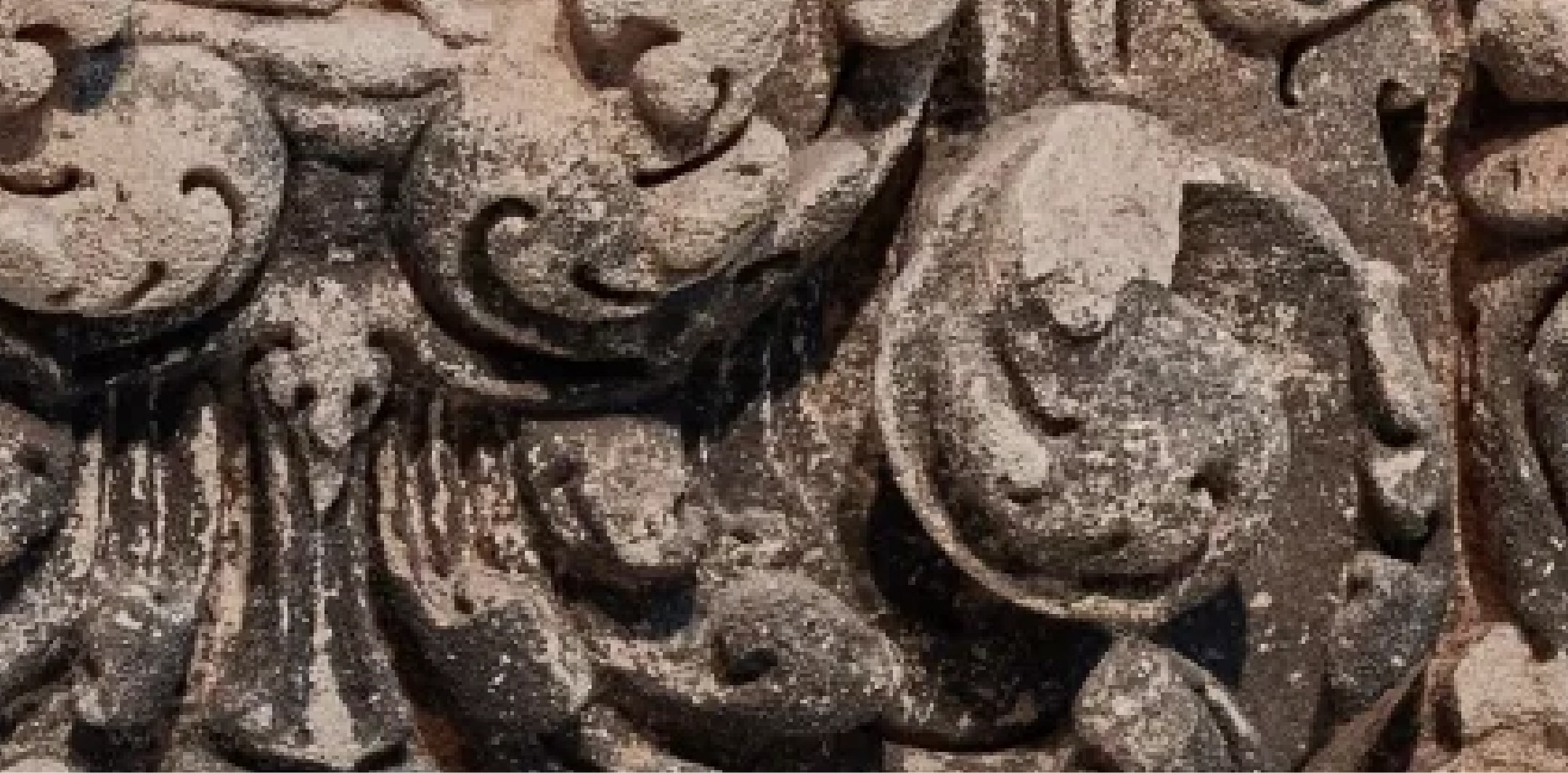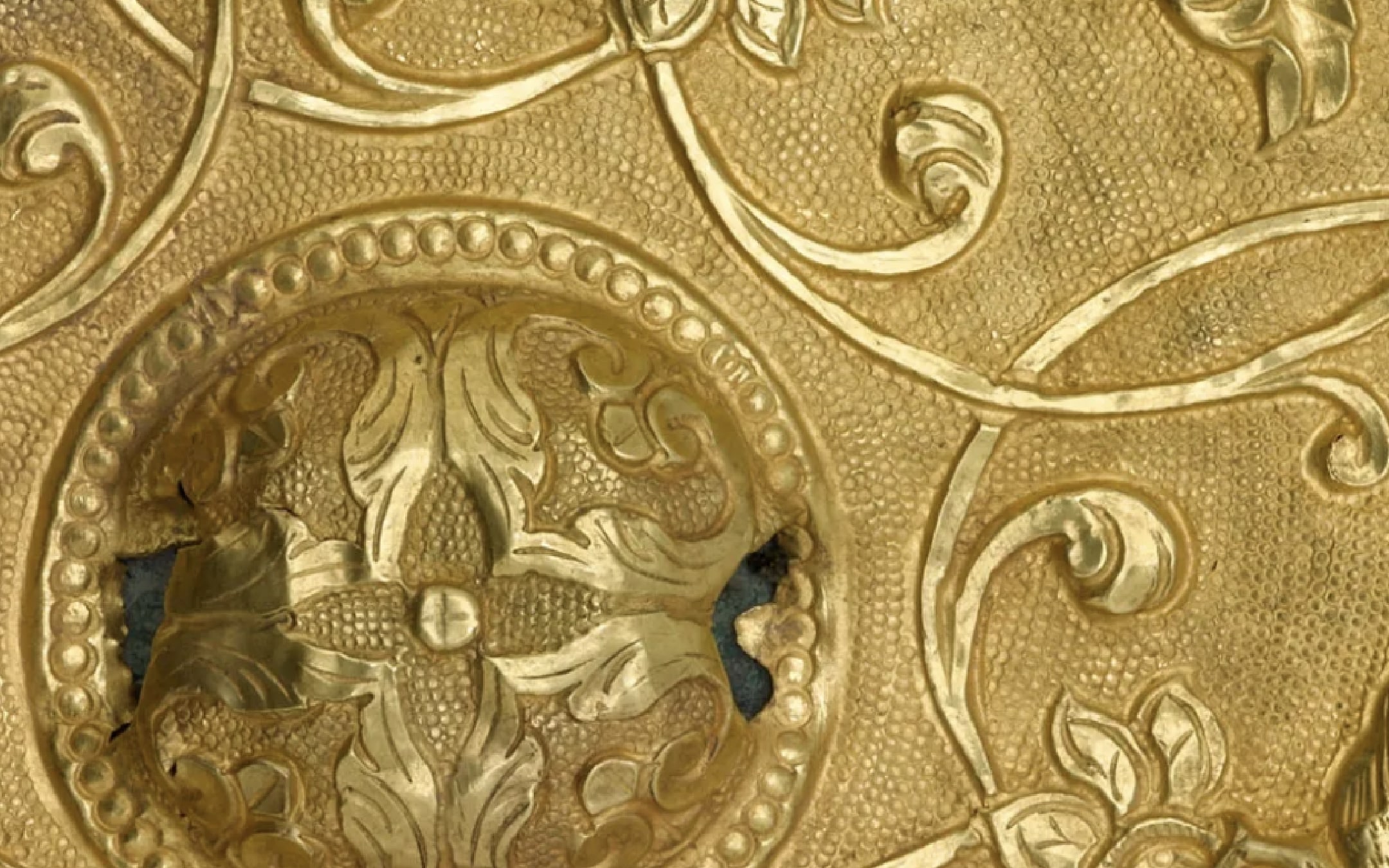Tile fragment

Terms of Use
Usage Conditions ApplyAt A Glance
-
Period
12th century or later -
Geography
Burma -
Material
Earthenware with copper-green tin-opacified lead glaze -
Accession Number
FSC-P-2975 -
EDAN ID
edanmdm:fsg_FSC-P-2975
Object Details
-
Provenance
12th century or later-1971Burma, Pagan, the Phar Ceti stupa in the Mimalakyaung complex [1]1971-1984Found by Dean F. Frasche(1906-1994) at the Phar Ceti stupa in the Mimalakyaung complex in Pagan, Burma [2]From 1984National Museum of Asian Art, Smithsonian Institution, gift of Dean F. Frasche [3]Notes:[1] See the adhesive label on the object, which indicates that the object was collected by Dean F. Frasche from the Phar Ceti stupa in Pagan, Burma in 1971. The label states, “PAGAN, BURMA, 1971 [/] FROM PHAR CETI (1610/918) [/] SMALL STUPA IN MIMALAUNG-KYAUNG [/] GROUP).” The number “1610/918” is the monument inventory number in Pierre Pichard, “Inventory of the Monuments of Bagan.” On the same label, inscribed in green wax pencil, “DFF PHAR-13-71.” The letter “DFF” probably stand for Dean F. Frasche.See also David P. Rehfuss, "Ceramic Sherds from Southeast Asia—The Freer Study Collection and its Donors," Ceramics in Mainland Southeast Asia: Collections in the Freer Gallery of Art and Arthur M. Sackler Gallery, 2008, http://SEAsianCeramics.asia.si.edu. Rehfuss states that Frasche’s “[t]ile fragments from Burma (Myanmar) were surface finds in Pagan.”Dean F. Frasche (1906-1994) was an American business executive and well-known collector of Asian ceramics. His interest in ceramics began in the 1930s when he lived in the Philippines as a surveyor for the Belgian government. After World War II, he ran Union Carbide Corporation's tin mining operations in Thailand. Frasche curated “Southeast Asian Ceramics: Ninth through Seventeenth Century” (Asia Society, New York, 1976), the first major exhibition of Southeast Asian ceramics in the United States, and also authored the accompanying exhibition catalogue. He acquired most of the Thai wares in his collection at or near their kiln sites. Objects from his collection may also be found at the Cleveland Museum of Art; the Philadelphia Museum of Art; the Herbert F. Johnson Museum of Art at Cornell University; and the Kelsey Museum of Archaeology at the University of Michigan. See David P. Rehfuss, "Ceramic Sherds from Southeast Asia—The Freer Study Collection and its Donors," Ceramics in Mainland Southeast Asia: Collections in the Freer Gallery of Art and Arthur M. Sackler Gallery, 2008, http://SEAsianCeramics.asia.si.edu.[2] See the Registrar’s memo, dated November 2, 1984, copy in object file. The object was transferred from Dean F. Frasche to the Freer Gallery of Art for acquisition consideration before November 2, 1984. The memo states, “Received from Mr. Frasche many shards from the Philippines, Thailand, etc. See Study Collection (Mrs. [Jo] Knapp) for quantity and numbering.”[3] See Study Collection card, copy in object file. The card states that this object is a “Gift of Dean Frasche, October 1984.”The object is part of the museum’s Freer Study Collection.Research updated October 30, 2024 -
Collection
Freer Study Collection -
Previous custodian or owner
Dean F. Frasche (1906-1994) -
Origin
Burma -
Credit Line
Gift of Dean Frasché -
Type
Architectural Element -
Restrictions and Rights
Usage Conditions Apply
There are restrictions for re-using this media. For more information, visit the Smithsonian's Terms of Use page.
The information presented on this website may be revised and updated at any time as ongoing research progresses or as otherwise warranted. Pending any such revisions and updates, information on this site may be incomplete or inaccurate or may contain typographical errors. Neither the Smithsonian nor its regents, officers, employees, or agents make any representations about the accuracy, reliability, completeness, or timeliness of the information on the site. Use this site and the information provided on it subject to your own judgment. The National Museum of Asian Art welcomes information that would augment or clarify the ownership history of objects in their collections.
Keep Exploring
-
Related Resources
-
Date
-
Name
-
Place
-
Topic
-
Culture
-
Object Type

